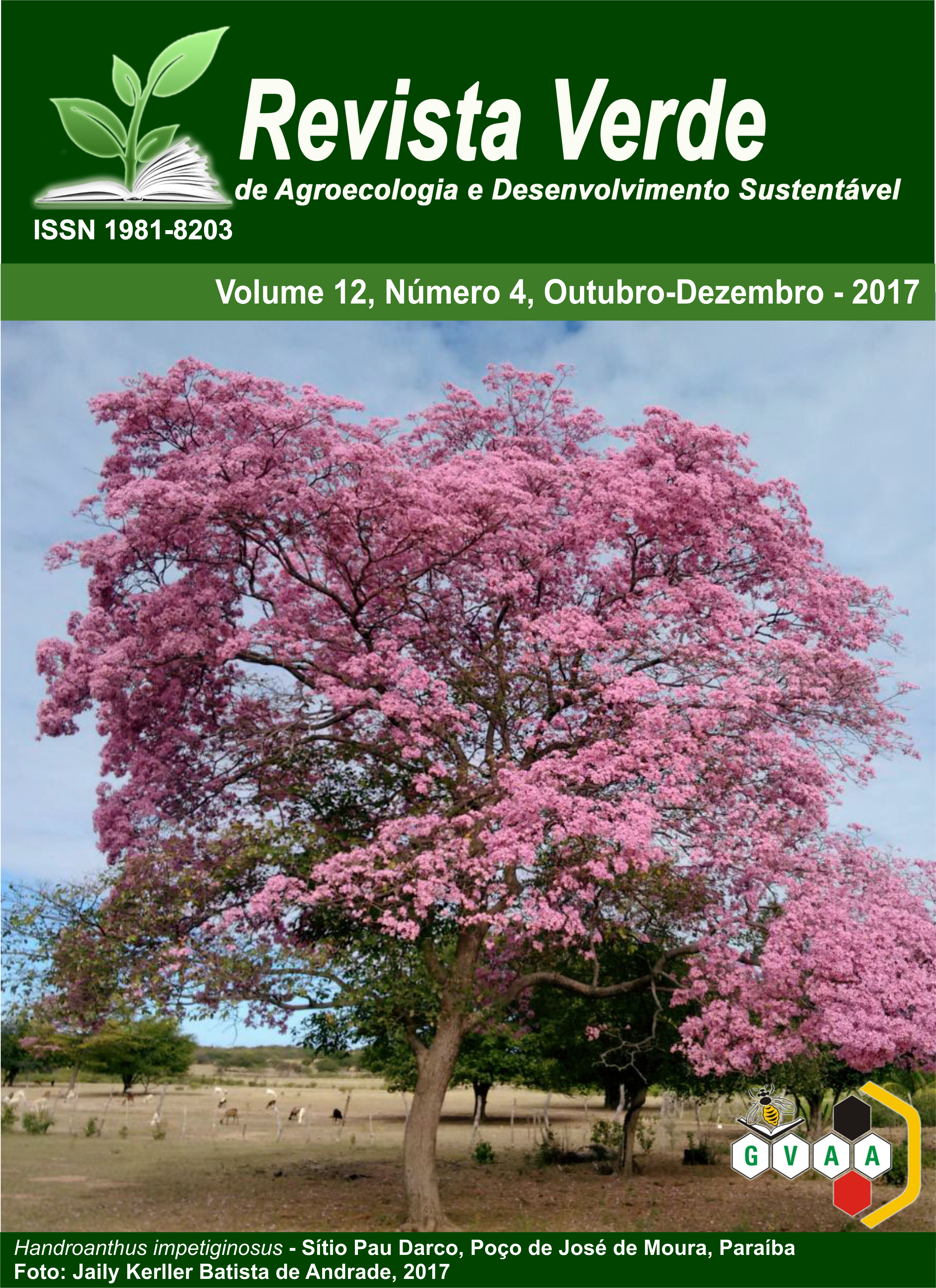Evaluation of interpolators for aquifer vulnerability study: The case of the Santa Maria River Basin
DOI:
https://doi.org/10.18378/rvads.v12i4.4959Keywords:
Groundwater, Contamination, Semivariogram, KrigingAbstract
Studies evaluating the natural vulnerability of aquifers have relevant importance for the knowledge of subject environmental contamination areas. The correct application in vulnerability maps needs constant studies, aiming the improvement of the analyzes and the development of representative maps of the studied areas. The objective of this study was to evaluate the performance of different models for the interpolation of environmental indicators of aquifer vulnerability using the kriging technique. The study was carried out in the Santa Maria River Basin by analyzing the hydrogeological aspects of 255 tube wells, located in six municipalities in the southwest of the State of Rio Grande do Sul. The data indicated that the high vulnerability class prevailed in 47,45% of the evaluated wells, followed by the medium vulnerability class corresponding to 23,14%; the low vulnerability represented 14,50%, the extreme vulnerability class corresponded to 7,85% and insignificant indicated 7,05%. The spherical, exponential, gaussian and linear models were used to interpolate the data, to define the best fit from the application of the semivariogram function. The adjustments were evaluated through the least squares method, which evidenced the best approach from the spherical model among the tested models. The spatial distribution of vulnerability demonstrated the predominance of high vulnerability in the southern portion of the municipality of Santana do Livramento, central portion of Rosário do Sul, north and northeast of São Gabriel and center of Lavras do Sul. In some areas of the basin, in municipalities of Santana do Livramento and Lavras do Sul was found the class of extreme vulnerability aquifer.Downloads
References
ALLER, L.; LEHR, J. H.; PETTY, R.; BENNETT, T. Drastic: A standardized system for evaluating groundwater pollution potencial using hydrogeologic setting. National Water Well Association, Ohio. p.38-57, 1987.
BACHMAT, Y.; COLLIN, M. Mapping to assess groundwater vulnerability to pollution. In: Vulnerability of soil and groundwater to pollutants. Proceedings and Information. p.297-307, 1987.
CAMPONOGARA, I. Vulnerabilidade natural do Sistema Aquífero Guarani, em Santana do Livramento, RS, com uso de geotecnologias. 2006. 110f. Dissertação (Mestrado em Geomática) – Universidade Federal de Santa Maria, Santa Maria, 2006.
CARRARO, C. C. Mapa Geomorfológico do Estado do Rio Grande do Sul. FAPERGS – UFRGS/Instituto de Geociências. 1974, 1: 1.000.000.
CIVITA, M. Assesment of aquifer vulnerability to contamination. Protezione e Gestione delle Acque Sotteranee: Mettodologie, Technologie e Obbietivi. Marano sul Panaro, v. 3, p. 39-86, 1990.
CPRM. Companhia de Pesquisa em Recursos Minerais. Sistema de Informações de Águas Subterrâneas. 2016. Banco de dados dos poços cadastrados. Disponível em: <http://siagasweb.cprm.gov.br>. Acesso em abril de 2016.
CPRM. Companhia de Pesquisa em Recursos Minerais. 2007. Mapa Geológico do Estado do Rio Grande do Sul. Escala de 1:750.000.
DESCOVI FILHO, L. L. V. Subsídios ambientais para a gestão das águas subterrâneas na bacia hidrográfica do rio Santa Maria. 2009. 156f. Dissertação (Mestrado em Engenharia Civil) - Universidade Federal de Santa Maria, Santa Maria, 2009.
ERTEL, T.; LÖBLER, C. A.; SILVÉRIO DA SILVA, J. L. Índice de vulnerabilidade das águas subterrâneas no município de Rosário do Sul, Rio Grande do Sul. Revista Eletrônica em Gestão, Educação e Tecnologia Ambiental, Santa Maria, v.7 n.7, p.1400-1408, 2012.
FOSTER, S. S. D.; HIRATA, R. Groundwater pollution risk assessment. A methodology using available data. Pan American Center for Sanitary Engineering. and Environmental Sciences. Lima, 1988. 87p.
FOSTER, S.; HIRATA, R. C. A.; GOMES, D.; D’ELIA, M.; PARIS, M. Proteção da Qualidade da Água Subterrânea: um guia para empresas de abastecimento de água, órgãos municipais e agências ambientais. São Paulo: SERVMAR, 2006. 114p.
FOSTER, S.; HIRATA, R.; ANDREO, B. The aquifer pollution vulnerability concept: aid or impediment in promoting groundwater protection?. Hydrogeology Journal, v.21, n.7, p.1389-1392, 2013.
FRANTZ, L. C. Avaliação do Índice de Vulnerabilidade do Aqüífero Guarani no Perímetro Urbano da Cidade de Santana do Livramento. 2005. 125f. Dissertação (Mestrado em Engenharia Civil) - Universidade Federal de Santa Maria, Santa Maria, 2005.
HIRATA, R.; FERNANDES, A. J. Vulnerabilidade à poluição de aquíferos. In: FEITOSA. F. A. C.; FILHO J. M.; FEITOSA E. C.; DEMÉTRIO J. G. A. (Org.) Hidrogeologia: Conceitos e aplicações. 3 ed. Rio de Janeiro: CPRM; LABHID, 2008. Cap. 5.4, p.406-425.
IBGE. Instituto Brasileiro de Geografia e Estatística. Cidades. 2010. Disponível em: <http://www.ibge.gov.br/cidadesat/default.php> Acesso em 18 de maio de 2016.
LÖBLER, C. A.; BORBA, W. F.; SILVÉRIO DA SILVA, J. L. Vulnerabilidade das águas subterrâneas da bacia do rio Santa Maria, Rio Grande do Sul. Ciência e Natura, Santa Maria, v.38, n.1, p.84-94, 2016.
MATHERON, G. Principles of geostatistics. Economic geology, v.58, n.8, p.1246-1266, 1963.
OEA. Organização dos Estados Americanos. Programa Estratégico de Ação (PEA) do Projeto Sistema Aquífero Guarani (PSAG). 2009. Disponível em: < http://www.ana.gov.br/bibliotecavirtual/arquivos/20100223172711_PEA_GUARANI_Port_Esp.pdf>
PAVÃO, A. D. M. Avaliação do índice de vulnerabilidade na bacia hidrográfica do rio Santa Maria. 2004. 107f. Dissertação (Mestrado em Engenharia Civil) - Universidade Federal de Santa Maria, Santa Maria, 2004.
R CORE TEAM. R language definition. Vienna, Austria: R foundation for statistical computing, 2017.
RIBEIRO JUNIOR, P. J.; DIGGLE P. J. geoR: a package for geostatistical analysis. R news, v.1, n.2, p.14-18, 2001.
SOARES, A. Geoestatística para as ciências da terra e do ambiente. 2.ed. Lisboa: Instituto Superior Técnico, 2006. 232p.
TAVARES, P. R. L.; CASTRO, M. A. H. D.; COSTA, C. T. F. D.; SILVEIRA, J. D. G. P. D.; JÚNIOR, F. J. B. D. A. Mapeamento da vulnerabilidade à contaminação das águas subterrâneas localizadas na Bacia Sedimentar do Araripe, Estado do Ceará, Brasil. Revista Escola de Minas, Ouro Preto, v.62, n.2, p.227-236, 2009.











